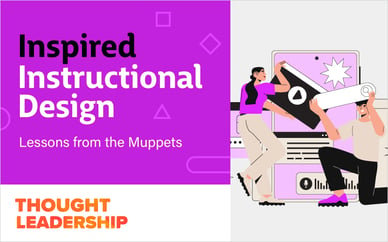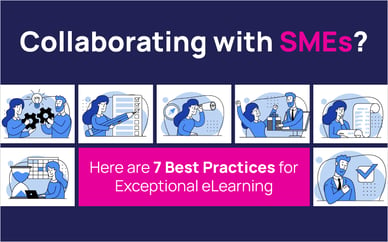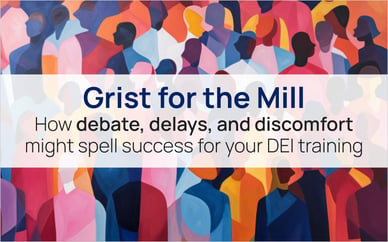ELB Learning has been at the forefront of creating better learning experiences for learners for close to two decades now. A large portion of that time has been spent on building learning content and developing learning strategies that engage and excite learners. Over the years we have met with and spoken to many L&D managers and we are seeing an upward trend of leaders embracing the concept of playbooks in learning. While the sales playbook is well-known and adopted by a lot of organizations, other departments are finding merit in them too.
In this webinar, Richard Vass, VP Learning Strategy at ELB Learning delves deep into this universal phenomenon of playbooks and how learning organizations and functional departments can find value in them.
- Discover the two features that set your playbook apart—-form and function
- Learn the 5 strategies missing from your sales enablement playbook
- Understand best practices to position your playbook front and center
- Learn how to capture the valuable insights and organizational knowledge flowing through your company
But First, What Is a Playbook?
Richard explains the concept of playbooks with a sales perspective. Here’s what he says.
“A Sales Playbook is a complete and concise set of instructions, enabling tools, content and resource links that will be used by the sales team to understand and execute the play. It is more than a series of call scripts and sales sheets. It’s a go-to guide for tackling their biggest challenges, a roadmap for reducing new hire onboarding time and the secret to driving big productivity gains. A step-by-step plan to achieve success.”
Here’s what a playbook isn’t:

A learning playbook will serve well for:
- New hire orientation
- Step/Task procedures
- Linear process
- Specific task-oriented jobs, including:
- Sales / Marketing
- Quality Control
- Manufacturing
- Healthcare
- Government
A playbook can aid as a just-in-time resource or as a performance support tool at the workplace.
Form Vs Function
To bring clarity on this topic, Richard uses the example of a sales playbook and how it accommodates form and function to help the sales team.
In form, a sales playbook will feature key aspects such as the sales process and the different buyer personas to be aware of. It goes on to include the right sales pitch, effective ways to handle objections, the sales tools and metrics to bank on, and also provides resources for ongoing training and development of sales reps.
The function is to simply drive a structured and standardized approach to the sales process—to help in performance at the point of need. “When you are able to deliver support at the time and place of need, you have a playbook right there,” clarifies Richard.
Sales Playbook In Action: Hubspot
Salespeople spend a lot of time in their customer relationship management (CRM) software—-this is where they find their customers, activities, set notifications, daily tasks and communicate with their accounts. Every detail is tracked and opens up several avenues for improvement, automation and analytics.
Through the CRM, such as Hubspot or Salesforce, the sales rep gets to choose a playbook in need—Call Outline or Discovery Call or Qualification Call—the three as defined by the company to assist the sales team at large. Once chosen, there is a detailed step-by-step guide to follow, complete with objections, branching scenarios, script, discussion points, and much more to help the sale.
Watch the webinar recording to see how Rich navigates through Hubspot’s sales playbook.
When a new hire is onboarding, time to productivity and time to proficiency is supercharged from the get-go. A daily tool (playbook) that the sales team can rely on makes a significant difference to the learning environment and time to proficiency at an organization.
What’s Missing in Learning Playbooks?
- Methodology or Process: Thinking about the structure, how learners will benefit and experience learning
- Customization: Keeping learner needs and preferences front and center
- Funnel: Thinking about how each learning experience can organically lead to the next, and drive behavior change
- Input / Buy-in: Motivating employees to accept and use the tool
- Integration / Common Language: Aligning with existing systems and teams, steeped in reality.
Watch the webinar recording to understand each of the missing pieces
and how you can fix them.
Do you want to create learning playbooks at your workplace? ELB Learning can help you build better learning experiences. Speak with our learning strategists today.








